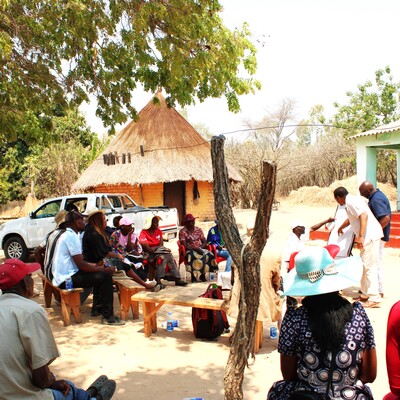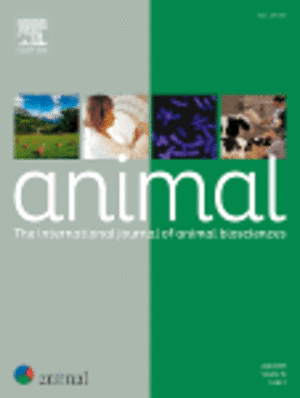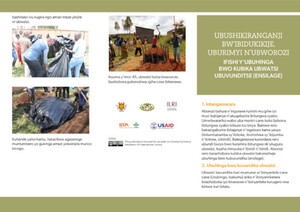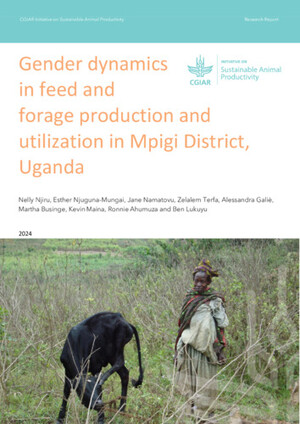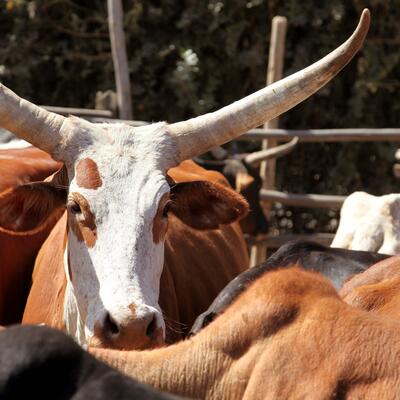
Hybrid extension approach promotes adoption of high-quality forages in Uganda
According to the Uganda’s Dairy Development Authority, annual milk production in the country increased from 2.08 to 2.5 billion litres between 2015 and 2017/18. But further improvement in milk productivity since then has been hampered by inconsistent supply of nutritious forages between the wet and dry seasons. During the wet seasons, dairy farmers have surplus forage feeds, often resulting in wastage; while in the dry seasons, which are increasingly prevalent, forage scarcity is common as is the use of poor-quality forages.
To address the problem of inconsistent feed supply in Uganda, a three-year (2019-2021) initiative has been promoting the use of improved forage seed varieties to ensure farmers have year-round supply of forages.
The Feed and Forage Seed Business Model (FFSBM) project, was established to professionalize the dairy sector by addressing challenges of poor-quality and limited access to forage seed. The FFSBM project targeted three production systems: The intensive small farm system (with farm sizes of 0.75–3 ha) in Mukono and Wakiso districts, where farmers rely on the cut and carry fodder system using Napier grass, crop residues and Calliandra; the traditional extensive system (with farm sizes of 1–65 ha) in Kiboga District, where farmers graze indigenous Ankole cattle on unimproved grasses; and the improved extensive system (farm sizes of 1–65 ha) in Mbarara and Kiruhura districts, where farmers graze their animals on improved and fenced pastures.
‘The initiative has used a hybrid extension approach using community radio programs and farmer field school days as key methods of reaching dairy farmers with the right information on forages use,’ says Ben Lukuyu, a feed researcher with the International Livestock Research Institute (ILRI) in Uganda. ‘In addition to radio and the farmer field schools, a new approach using a comic book, that packages information to improve the use of forages by dairy farmers, has been produced,’ he adds.
Radio programs
Farmer-targeted radio programs ran for three seasons and were aired in Luganda and Runyakitara, the local languages widely spoken in the project areas. The programs included spot advertisements, mentions on benefits of forages, available improved forage species suitable for each region and instructions on how to manage the crops among others. A multidisciplinary team of forage feed experts discussed topics such as forage selection, planting, benefits, field management, harvesting, rationing and forage preservation on both live and recorded talk shows. The teams also responded to questions and comments from call-in listeners.
Farmer field schools
Farmers also received weekly hands-on training in areas like farm management, nutrition improvement, best practices and output optimization for three seasons. The farmer field schools (FFS) were held at model farms with demonstration plots and production plots for improved forage varieties. Groups of 13 farmers met regularly with a model farmer facilitator to observe, discuss, ask questions and get training on topics that included forage storage, silage production, animal feeding and record keeping. Information leaflets in both English and local languages were distributed to farmers during field days. Joseph Rwambira, a farmer field school participant in Bwizibwera, Mbarara district said,
‘I learned about and got different types of forages through the farmer field school. This has enabled me to have enough feed for my animals, even during the dry season.’
Comic book
The new comic book, ‘Know more about forages’, is based on feedback from piloting the radio and farmer field school programs. It highlights the benefits of using improved forages in dairy farming and is available in English and will also be translated into Luganda and Runyakitara and distributed to farmers.
A survey will be conducted by the project team to assess farmers’ perceptions and determine the effectiveness of this medium in disseminating extension services.
-------------------------------------------------------
The Feed and Forage Seed Business Model project, implemented in Kenya and Uganda, is a partnership between the Royal Tropical Institute (KIT), Netherlands, and researchers from the Alliance of Bioversity & CIAT, ILRI, the National Livestock Resources Research Institute (NaLIRRI)-Uganda, the Kenya Agricultural and Livestock Research Organization (KALRO), Advantage Crops Limited (ACL) and Barenburg South Africa.
Download the ‘Know more about forages’ comic book here.
Learn more about the Feed and Forage Seed Business Model project.
https://hdl.handle.net/10568/117528








